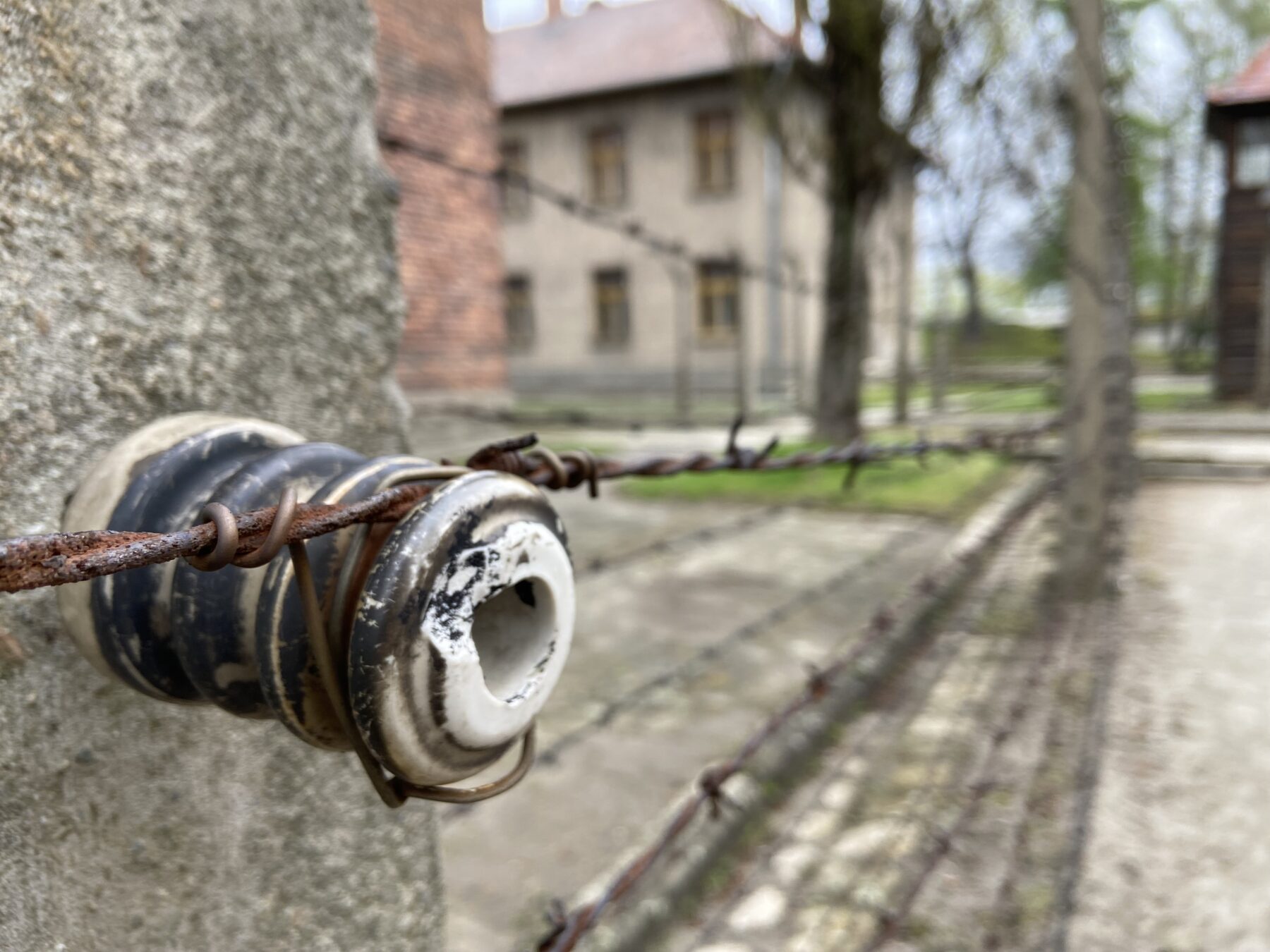Auschwitz-Birkenau
Auschwitz did not suddenly fall from the sky
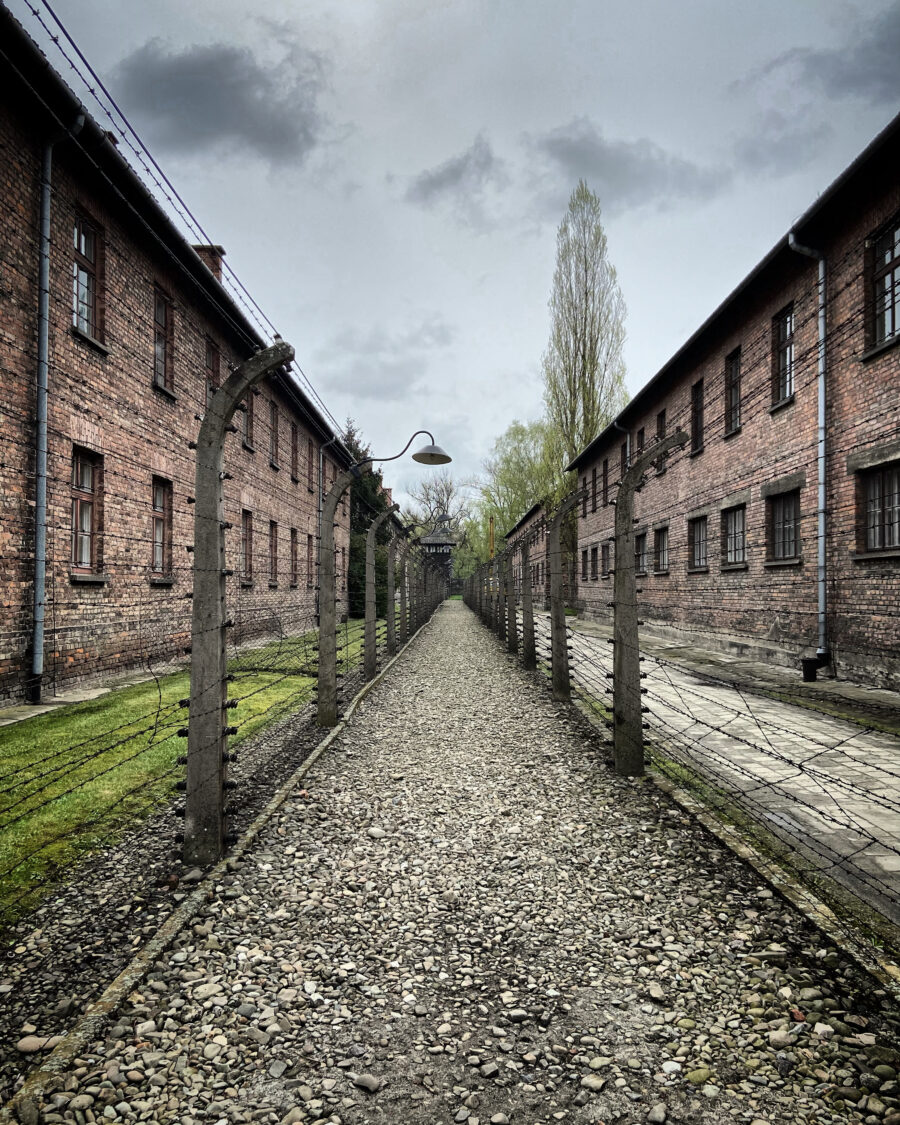 I get up early because the departure of the organized tour that will take me from Krakow to Auschwitz is at 6 a.m. It is raining and relatively cold even though it is the end of April. After leaving the city, the bus moves along a common road, boring almost, a country road that runs through meadows and small woods. It all seems trivially normal and it is probably this conventionality that makes me nervous: I have no peace because I cannot find answers to the thousands of questions that dwell in my heart as I approach this place of horror. How could all this have happened? Why was this machine of death not stopped? Where was everyone? Where was the world that saw and heard all this and did nothing to save all those people?
I get up early because the departure of the organized tour that will take me from Krakow to Auschwitz is at 6 a.m. It is raining and relatively cold even though it is the end of April. After leaving the city, the bus moves along a common road, boring almost, a country road that runs through meadows and small woods. It all seems trivially normal and it is probably this conventionality that makes me nervous: I have no peace because I cannot find answers to the thousands of questions that dwell in my heart as I approach this place of horror. How could all this have happened? Why was this machine of death not stopped? Where was everyone? Where was the world that saw and heard all this and did nothing to save all those people?
Despite the anguish I feel on this Liberation Day in Italy, I also think it is a necessary, moral, and ethical travel experience, especially today. At the same time, however, everything feels so surreal, almost dreamlike. When Primo Levi wrote “If This is a Man”, he was convinced that it was not worth documenting what had happened in this part of Poland (as well as in other, too many neighboring areas) because the atrocities committed were over: instead, the history of the last 50 years in Europe and elsewhere in the world, has shown us that the savagery is by no means complete and therefore we need to talk about it again, at every opportunity, because nations that do not remember history have no future and are bound to repeat their mistakes. The horror could be repeated in places where the past is diluted to meet current political needs, or where the majority is indifferent to the fact that minorities are being deprived of their rights. In light of what is happening in Italy, I think we should not be indifferent when a power or a government violates existing social rights because Auschwitz did not suddenly fall from the sky: its location, chosen with almost scientific millimetric care, was selected between two rivers in an isolated area on purpose.
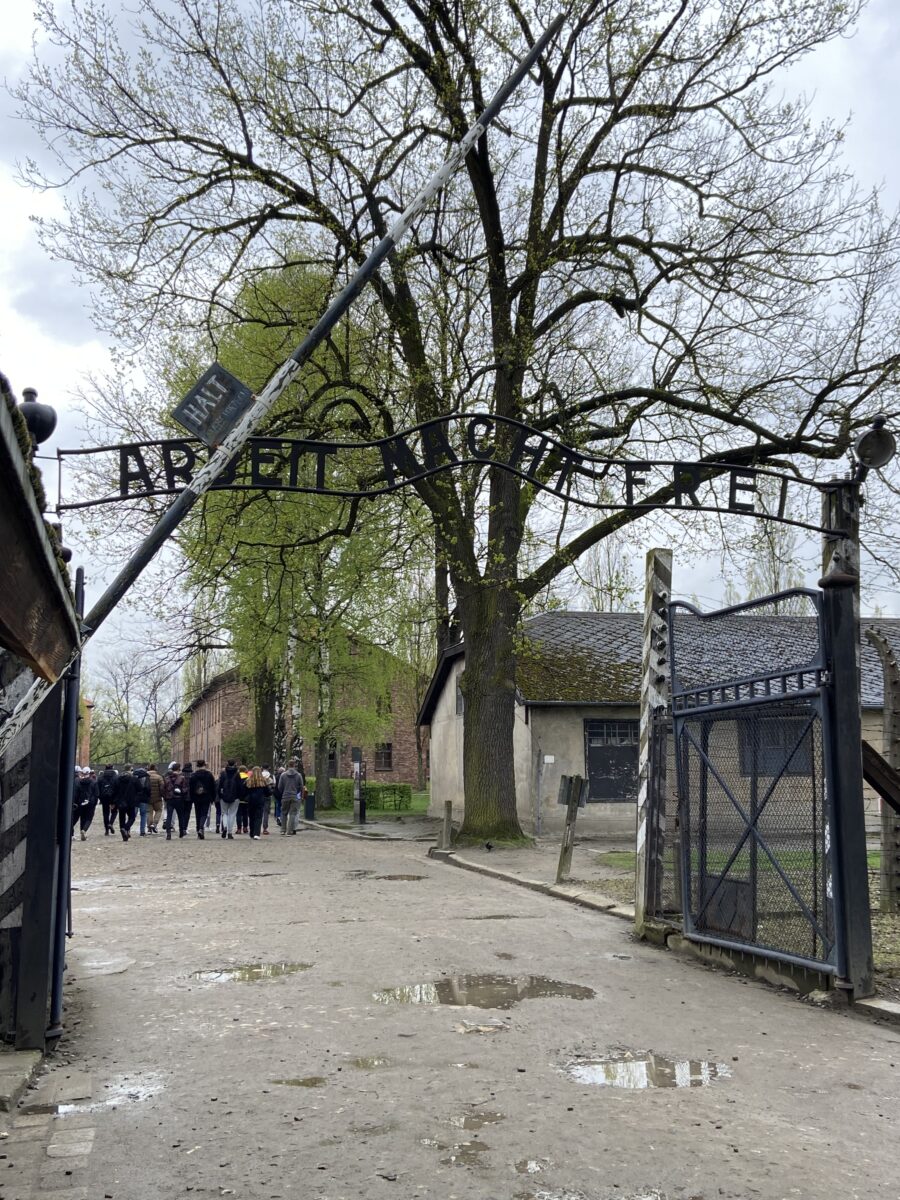 Contributing to the creation of this place of death was an incalculable series of small steps that came closer together until what happened here happened, until 1.3 million Poles, Sinti, Roma, Soviet prisoners of war, and above all some 1.1 million Jews lost their lives. The Nazi camp at Auschwitz-Birkenau was, in fact, the endpoint of a process that began with exclusion: from benches, from bakeries, from parks, from swimming pools. Once a new reality of stigmatization and exclusion was established, it was a short step to take away further rights, dehumanize and make that minority disappear. Tears for the past are useless when accompanied by indifference in the present to minorities suffering exclusion, racism, and violence.
Contributing to the creation of this place of death was an incalculable series of small steps that came closer together until what happened here happened, until 1.3 million Poles, Sinti, Roma, Soviet prisoners of war, and above all some 1.1 million Jews lost their lives. The Nazi camp at Auschwitz-Birkenau was, in fact, the endpoint of a process that began with exclusion: from benches, from bakeries, from parks, from swimming pools. Once a new reality of stigmatization and exclusion was established, it was a short step to take away further rights, dehumanize and make that minority disappear. Tears for the past are useless when accompanied by indifference in the present to minorities suffering exclusion, racism, and violence.
A huge, obscene money machine
A feeling of utter devastation sets in physically as soon as I pass through the gate on which the infamous inscription “Arbeit macht frei,” work makes you free, stands out. My eyes are already filled with tears at the beginning of this day. Our guide then leads us from there to a series of warehouses in which-organized in display cases-thousands of pairs of shoes can be seen, including some obviously belonging to children and teenagers, suitcases, glasses, and hair that were then sold on the German market. I realize once again that Auschwitz was a work of extermination, but it was also dramatically a huge, obscene money machine.
At the corner between the different sheds, there are wooden turrets, where in the heat and dry, the SS (who let us remember, were a special corps made up only of volunteers) checked on the submerged who were dying and falling ill in the cold and rain.
From there, almost like automatons, we move to Block 11: the perversion of what happened here seems to me to permeate its walls, still saturating the air. Punishments here were usually related to suspected sabotage, contact with civilians, attempts to escape or help escapees, or arrest during the escape. Normal cells had windows partially bricked up from the outside, and inmates could sleep on wooden cots. Instead of windows, dark cells had air vents covered on the outside by metal screens with air holes. Prisoners slept on the bare floor. Confinement in the dark cells lasted from several days to several weeks. Prisoners confined to starve to death for escape attempts, or after being chosen as hostages in retaliation against the escapes of others, were kept in the dark cells. Beginning in early 1942, prisoners also began to be punished by confinement in vertical cells. These were four spaces of less than one square meter each. The only source of air was an opening of a few centimeters, covered by a metal grille. The entrance to the standing cells was through a small opening at floor level, closed by bars and a wooden trapdoor. Four prisoners were confined in each of these spaces for the night. In the morning they had to go to work. Punishment was applied for periods ranging from a few nights to several weeks at a time. (1)
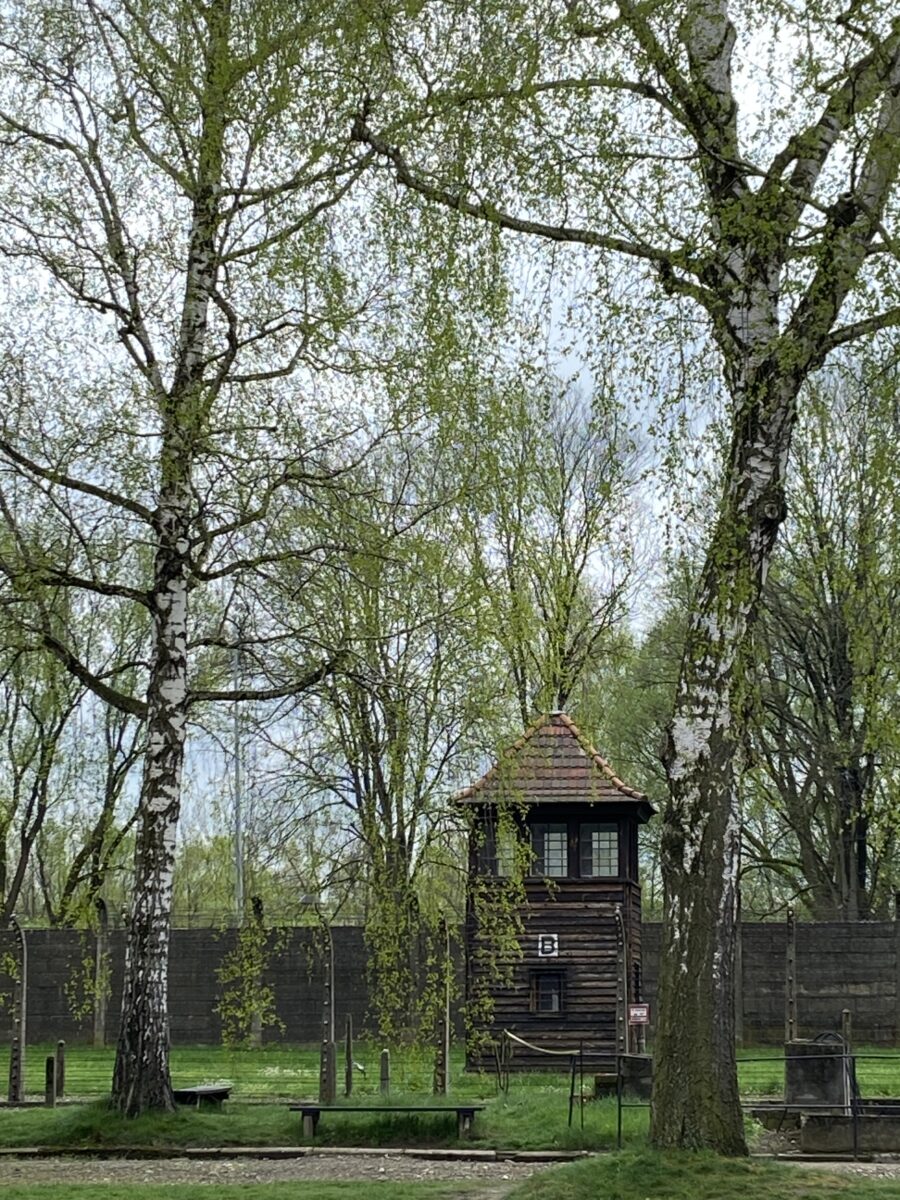 The Catastrophe
The Catastrophe
From Auschwitz I, the bus takes us within minutes to the entrance of Birkenau (Brzezinka in Polish, ‘birch forest’). It is the largest of the more than 40 camps and sub-camps that made up the Auschwitz complex (read this brief description again: 40 camps and sub-camps), and it is precisely its disproportionate size that cuts my breath as I look at the tracks that so inhabit the world’s collective imagination when one thinks of this place of perversion and torture.
Birkenau had several functions during its three years of ferocious activity: at the beginning, in 1941, it was supposed to be a labour camp for some 125,000 prisoners of war. In reality, the camp never fulfilled its original function. In fact, the following year it became to all intents and purposes an obscene branch of Auschwitz I. Here, the functions of concentration camps like Mauthausen or Dachau are combined with those of direct extermination centres like Treblinka or Bełżec (2).
The millimetric precision of horror, the methodical organisation of extermination – a new solution, designed to perform the economic and extermination tasks of the Nazi state simultaneously and as efficiently as possible.
About 90 percent of the victims of the entire Auschwitz system died at Birkenau: about one million people, nine out of ten of whom were Jewish, went into the wind. Of the other populations and cultures, most of the more than 70,000 Poles who passed through this death zone also died or were killed here. The same fate befell some 20,000 Roma and Sinti, as well as Soviet prisoners of war and other nationalities.
On the way back to Krakow, my head continues to grind with questions: how do you explain these numbers? How? Do you know how many shoes? How many dentures, how many beating hearts? How was it possible that – to take just one famous example among many – someone like Rudolf Höss, from a strictly Catholic family, brought up to be obedient and respectful towards adults and the elderly, could run a place like this without anyone stopping him? How is it possible that someone like this, the Animal of Auschwitz, during the Nuremberg trial, allowed himself to correct the president of the tribunal who had spoken of the murder of three million people in the gas chambers by saying that ‘it was only two and a half million, the others died of starvation, exhaustion or disease’? Who drove the trains that brought these people to the Auschwitz complex?
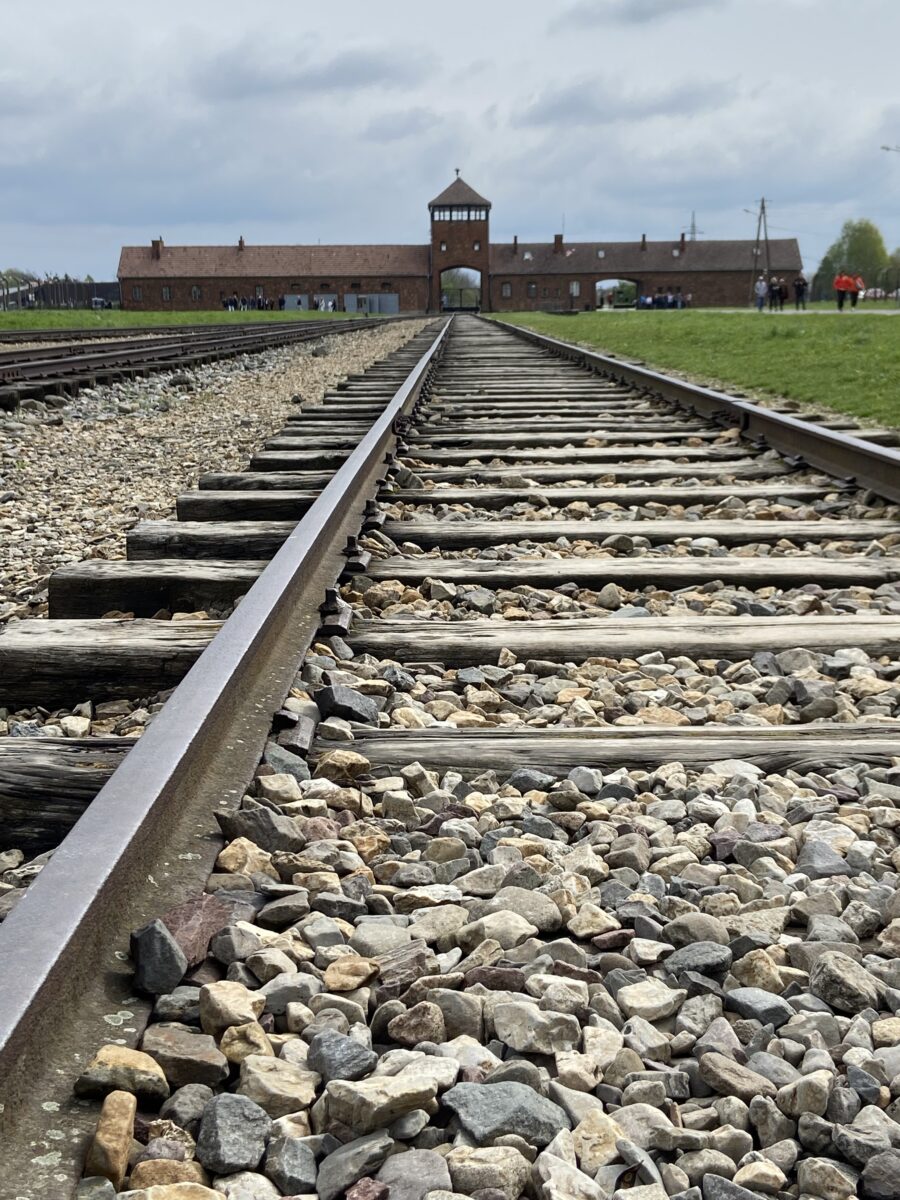 I cannot find answers. Perhaps simply the Shoah took place because individuals, groups, and nations decided to act or not to act.
I cannot find answers. Perhaps simply the Shoah took place because individuals, groups, and nations decided to act or not to act.
Denial or distortion of history is an attack on truth and understanding. And understanding and remembering the past is fundamental to understanding ourselves, our society, and our goals for the future. And so, with this small, tragic journey, I thought I would take action: to write about it, in the middle of summer, to annoy you a little perhaps, but above all to remind myself that intentionally denying or distorting the historical record threatens community understanding of how to safeguard democracy and individual rights.
The following resources might help you to continue the journey of understanding:
- https://www.ushmm.org/
- https://www.auschwitz.org/en/
- https://holocausteducation.org.uk/teacher-resources/materials/
- French resources: https://www.memorialdelashoah.org/
- https://www.skandorinasdiary.com/en/majdanek-these-lines/
References
(1) https://www.auschwitz.org/en/history/punishments-and-executions/block-11/
(2) https://www.auschwitz.org/en/history/auschwitz-ii/the-functions/
